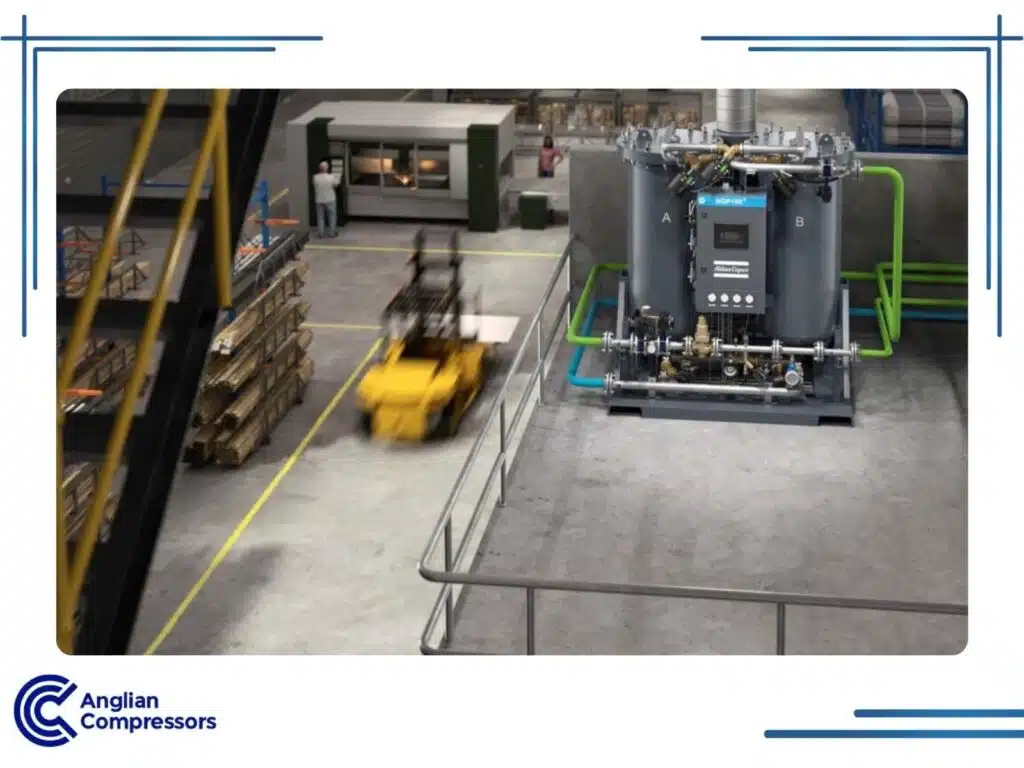The difference between industrial gas purity and quality
The subject of gas purity is an important one, even critical, for many industrial applications. Indeed, the difference between industrial gas purity and quality is often misunderstood. Gas quality and purity are two sides of the same coin; both are relevant to good nitrogen supplies.
In this article, we explain why gas purity matters and how to understand them. Quality issues, including potential contaminations, are covered too. We also provide clear examples of the kind of purity levels needed for different work applications or industry uses.
So, let us get started.
Pure Gasses: How Pure is Pure?
Gasses, like metals, are measured in purity.
For example, precious metals such as Gold and Silver are rated based on the percentage of pure gold or pure silver present in a gold bullion bar or silver coin. Therefore, while a coarsely produced gold bar may have 97% fine gold, it still contains 3 per cent of other unwanted metals, and miscellaneous other contaminants, too.
A gold bar marketed as “Fine Gold” may have 99.999% fine gold, with minimal other metals and impurities.
Pure gas is approached similarly. Quality industrial gas supplies and gas generators make available high-purity gasses for various industrial and commercial uses.
Gas Purity: Why Does It Matter in an Industrial or Commercial Setting?
Industry gas has purity grades to confirm its quality and applicability for different use cases. As such, a supply of nitrogen that’s found to be of inferior purity might be unusable in its present form.
Why is that?
The reason is that different uses require a minimum gas purity level.
Laser cutting requires fewer contaminants within the nitrogen gas, so its purity must be higher. The beverage and food industries also need a high purity with minimal potential contamination. Otherwise, the final product won’t turn out as intended or be stored properly prior to distribution, and eventual consumption.
Therefore, nitrogen – either produced using an in-house gas generator or delivered nitrogen – must by necessity, meet a minimum purity. At the same time, it is necessary to know ahead of time for which the N2 gas will be used. Otherwise, whether supplied (or produced on-site), discovering the oversight too late is highly problematic.
Over-specification of purity levels is best avoided. So, given that purity is determined by the intended application, paying more for a higher gas purity is wasteful.
Gas Quality: What Potential Contaminants Are Present in Nitrogen Gas?
Nitrogen is abundant in the lower atmosphere. Nitrogen gas generators, combined with compressed air generators, can produce a steady flow of N2 gas.
For larger-scale operations, other approaches to nitrogen production may be used, but contaminants are always a quality factor to consider. When there is too much contamination, it alters the quality of the gas and, sometimes, the expected outcome when it’s used.
Here are some quick examples of contamination issues:
Carbon dioxide may be found in nitrogen supplies. Mixed gasses – a little bit of this and a little of that – are too. Oxygen or water could be present too.
Hydrocarbons must be minimised to keep them out of food or beverage products. This applies to the nitrogen used during processing, or for packaging needs too.
Even welding is affected when nitrogen purity is below 99.5%. Contamination introduces too many impurities to the weld. As a result, welds are not as strong or durable.
Purity Level Requirements: Industry and Use Case Examples
Here are several industry-related and other use-case examples:
Pharmaceutical
The purity rating required for the pharmaceutical industry varies depending on the specific application. This is where cost savings are possible by matching the gas purity level to each use case. On-site nitrogen generators allow for on-demand N2 production using different purity settings, as required.
Medical-grade nitrogen sits at the low end at 97% to as high as 99.999% for ultra-high purity levels. The medical use case determines the appropriate purity level, be that for storage, drug manufacturing, or safer transit of materials.
Healthcare and Medical Research
For the healthcare and medical research fields, different nitrogen purities are needed.
Healthcare requires a 99.5% purity as a minimum in about all situations. For medical research where impurities may alter case study analysis and outcomes, only a 99.999% purity will do.
Food and Beverage
The food and beverage industries use nitrogen in many ways. These include the production of the end product and the packaging of the consumable.
Food-grade N2 gas supplies are needed at a 99.9% purity to qualify. The higher purity is necessary to exclude potential contaminants that might affect flavour and freshness. Nitrogen used within the packaging process also avoids premature food spoilage.
Energy Production & Supply
Line purging actions for natural gas or the purging of gas seals rely on inert gasses to perform this function.
Working with gas boilers sometimes makes use of nitrogen too. Using argon or nitrogen, a type of blanketing ensures boilers remain non-reactive to outside materials.
Depending on the uses of the gas, purity may be as low as 95% or as high as 99.9%.
Semiconductor & Related Industries
The semiconductor and other electronic manufacturing businesses use a mix of purity levels for nitrogen.
For example, adhesive blanketing or cleaning processes require lower purity levels, starting at 95% and reaching 99.5% in some use cases. Whereas, detailed semiconductor manufacturing may reach 99.999% purity levels, or at least, a 99.9% purity, to ensure few impurities remain in the electronic products.
Industries Using Heat Treating Processes
Heat treatment, such as metal fabrication, specifically metal creation and other metalwork, often uses nitrogen.
Also, nitrogen-related heat treatment applies to other activities, such as clearing oxygen from older furnaces or removing oxidation at its source.
Heat treating and related work require a higher gas purity level. This begins at 99.9% but is sometimes a 99.999% purity, depending on the application.
Industries Using Laser Cutting Processes
Laser cutting is useful for cutting through metals and other materials.
The type of metal or other material being cut, and its thickness, materially alters the nitrogen purity necessary to get the job done. Specifying the proper purity level allows for cleaner cuts, reduced oxidation, and a better result.
N2 purity might be sufficient at 95% or a purity of 99.95% at the extreme end. With laser cutting, each use case is different.

Get Help with Nitrogen Purity Planning
The purity and quality of nitrogen supplies affect the results achieved. Overpaying for over-specified gas (at higher purity than needed) is costly and wasteful. There is no way to claw back the expense later, and the more nitrogen used, the bigger the loss.
On-site production of nitrogen to your specifications to match individual use cases makes sense. Talk with our knowledgeable team at Anglian Compressors to see how we can help.
Contact us below.


